Water Wisteria For Betta Fish, Is It Good?
Among the myriad aquatic plants available to Betta enthusiasts, one stands out for its unique aesthetics and benefits, The Water Wisteria.
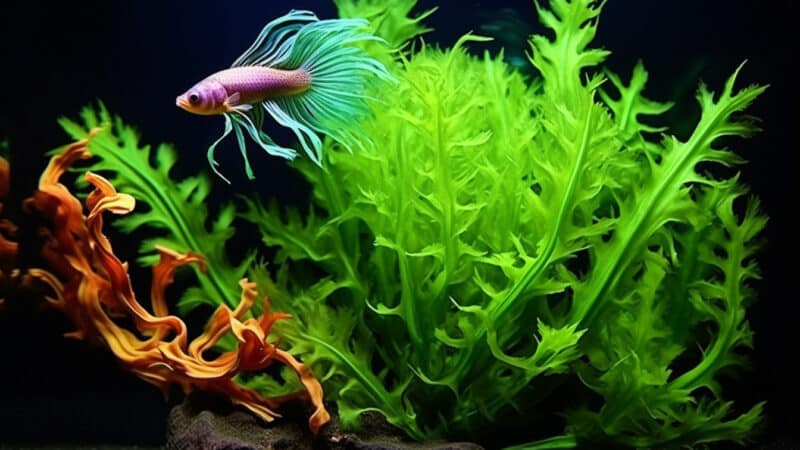
Diving into the world of Betta fish care is both exciting and nuanced. Every decision, from the tank’s water parameters to its resident plants, plays a crucial role in creating an ideal environment for these colorful aquatic pets.
Plants, in particular, do more than just decorate, they can enhance water quality, provide shelter, and stimulate your Betta’s natural behaviors. But is Water Wisteria a good choice for your Betta tank?
Let’s delve into the captivating world of this spectacular plant and discover its potential role in the realm of Betta care.
Table of Contents 🦑
Understanding Water Wisteria
Water Wisteria, scientifically known as Hygrophila difformis, is an aquatic stem plant that grows roots, native to the Indian subcontinent.
Scientific Background and Origin of Water Wisteria
Water Wisteria thrives in the marshy terrains of India, Nepal, and Bhutan, typically alongside freshwater bodies. Due to its beautiful appearance and adaptability, it’s not just popular in its native region but has garnered attention from aquarists around the globe.
Physical Appearance and Growth Pattern
At first glance, Water Wisteria impresses with its deeply lobed and vibrant bright green color leaves. This distinctive leaf structure can sometimes resemble ferns, especially when submerged, which adds a unique texture to any aquarium setting.
The plant can grow both submerged and emerged. In its submerged state, the leaves tend to be more dissected and lace-like, while emerged leaves are broader and less intricate.
Growing between 10 to 20 inches (25 to 50 cm) tall, Water Wisteria is a fast-growing plant. It often exhibits a bushy growth pattern, with numerous side shoots branching out from the main stem. This dense growth not only creates an impressive backdrop in aquariums but also provides ample cover and foraging opportunities for Betta fish.
With the right conditions, aquarists will notice this plant’s ability to quickly fill spaces, offering a lush green environment that can be both visually pleasing and beneficial for the tank’s inhabitants.
Benefits of Water Wisteria in Betta Tanks
Water Wisteria is undeniably one of the more beautiful aquatic plants available to aquarists. Its lace-like, dissected leaves bring a unique texture and lush green hue to the aquarium, instantly elevating its visual appeal.
Enhancement of Tank Aesthetics
When strategically placed, the Water Wisteria can act as a captivating focal point, drawing eyes with its intricate patterns and bushy growth. The dynamic appearance of this plant ensures that no two tanks will look exactly the same, offering a personalized touch to every aquarium.
Oxygenation and Water Purification
A healthy tank requires clean, well-oxygenated water, and Water Wisteria plays a crucial role in achieving this balance. Like other aquatic plants, it absorbs carbon dioxide during the day and releases oxygen, aiding in maintaining an optimal level for Betta fish.
This consistent oxygen supply ensures your Betta has an environment where it can breathe and thrive. Additionally, Water Wisteria aids in water purification. It absorbs waste materials and harmful nitrates, thereby contributing to clearer water and reducing the risk of potential diseases in the tank.
Shelter and Playful Spots for Betta
Betta fish are curious creatures. They love to explore, hide, and play around the vegetation in their habitat.
The dense growth and branching nature of Water Wisteria make it an ideal hideout spot for these little swimmers. It offers them pockets of shelter where they can rest, sleep, or even display playful behavior.
The dense foliage is also perfect for females to lay their eggs or for males to build bubble nests. Moreover, this plant’s intricate leaves become grounds for microorganism growth, providing a snack-hunting spot for Betta, thus keeping them engaged and content.
Planting and Caring for Water Wisteria
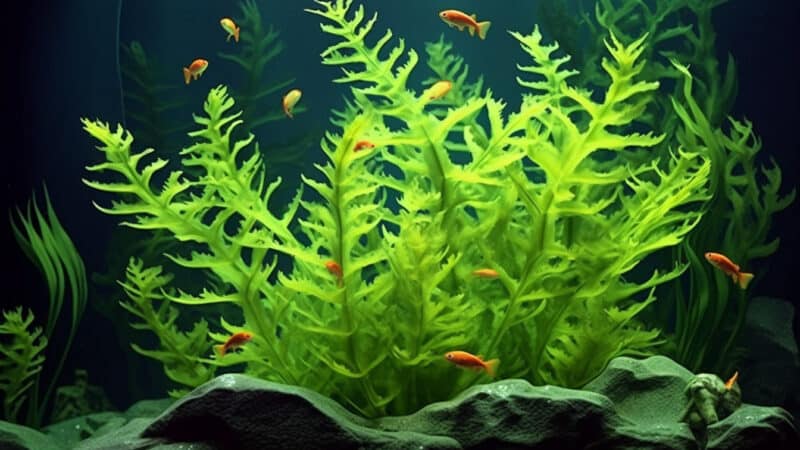
The world of aquarium plants can be a rewarding experience, especially when you choose gems like Water Wisteria. When getting some new plants to your aquarium, it’s essential to understand its needs and care requirements. Let’s delve into the optimal conditions and care.
Optimal Conditions for Growth
Lighting: Water Wisteria thrives best under moderate to high lighting conditions. If you’re using artificial lights, aim for around 8-12 hours of illumination daily. This ensures that the plant receives adequate light for photosynthesis, leading to vibrant and robust growth.
Substrate: This plant isn’t overly picky about its substrate. A nutrient-rich substrate is ideal, but even in standard gravel or sand, Water Wisteria can grow quite well, especially if supplemented with root tabs or liquid fertilizers.
Pro Tip: Use Water wisteria as a background plant, cause it might be a fast-growing plant.Water Parameters: Water Wisteria is versatile and can adapt to various water conditions. However, for optimal growth, maintain a water temperature between 70-82°F (21-28°C). The pH level should ideally be kept between 6.5 to 7.5. Additionally, soft to moderately hard water is preferable.
Common Care Practices
Fertilization: While Water Wisteria can do well without fertilizers, providing it with liquid fertilizers or root tabs can significantly boost its growth and vibrancy. If you notice the leaves turning yellow or the plant appearing weak, it might be an indicator that it needs more nutrients.
Pruning: One notable characteristic of Water Wisteria is its fast growth rate. To ensure it doesn’t overrun your tank or overshadow other plants, regular pruning is necessary. Trim the plant using aquatic scissors, cutting back elongated stems or removing old leaves, to encourage bushier growth and maintain its desired shape.
Water Wisteria Propagation: Water Wisteria is easy to propagate. Simply cut a healthy stem with a few leaves from the main plant, ensuring it’s around 4-6 inches long, and plant it into the substrate. With proper care, this stem will grow into a new Water Wisteria plant in no time.
By understanding its basic needs and ensuring regular maintenance, Water Wisteria can become a long-lasting and beautiful addition to any Betta fish tank.
Potential Challenges and Solutions
Every plant, no matter how adaptable, can pose certain challenges in an aquarium setting. As you embark on your journey with Water Wisteria, being aware of potential hurdles and equipped with solutions will make your experience smoother.
Let’s navigate the common issues Betta fish owners might face with this plant and arm ourselves with effective remedies.
Rapid Overgrowth
Challenge: One of the most common issues with Water Wisteria is its rapid growth rate. If left unchecked, it can quickly overrun a tank, causing space and light issues for other plants and inhabitants.
Solution: Establish a routine pruning schedule. Regularly trim back excessive growth to ensure a balanced aquarium. This not only controls its spread but also encourages bushier and healthier growth patterns.
Nutrient Deficiency
- Challenge: Yellowing leaves or weak stem growth can be indicative of nutrient deficiencies, particularly if your tank lacks a nutrient-rich substrate.
- Solution: Incorporate liquid fertilizers or root tabs into your care routine. Monitoring the plant’s color and growth can help you determine if additional nutrients are necessary.
Algae Growth on Leaves
- Challenge: The large, broad leaves of Water Wisteria can sometimes become a hotspot for algae growth, especially in tanks with excessive light or nutrient imbalances.
- Solution: Ensure the lighting duration and intensity are optimal. If algae persist, consider introducing algae-eating creatures like snails or shrimps, or using algae control treatments cautiously, ensuring they’re safe for your Betta fish.
Floating Plant
Challenge: Sometimes, especially after planting, Water Wisteria might not anchor itself quickly enough and may float to the surface.
Solution: When planting Water Wisteria, ensure the stems are buried deep enough in the substrate to prevent them from floating away. Using plant weights temporarily can also help keep them anchored.
By staying vigilant and addressing challenges early on, Betta fish owners can enjoy the beauty and benefits of Water Wisteria without any major hassles.
Betta Fish and Their Interaction with Water Wisteria
Water Wisteria isn’t just a decorative piece; for Betta fish, it’s an entire world of exploration and comfort. Here’s a look into how these vibrant fish interact with this aquatic plant:
Curious Explorers: Betta fish are naturally curious creatures. The intricate network of leaves and stems of the Water Wisteria offers numerous nooks and crannies for them to explore. You’ll often find your Betta swimming in and around the plant, investigating every hidden corner.
Rest and Relaxation: Bettas are also known for their occasional need to rest, and the broad leaves of the Water Wisteria serve as perfect lounging spots. It’s not uncommon to spot a Betta taking a short nap or just relaxing on one of the plant’s leaves, especially after a feeding or playful chase around the tank.
Playful Hide and Seek: The dense foliage of Water Wisteria acts as a natural playground. Bettas often indulge in playful behavior, darting in and out of the leaves, almost as if playing a solo game of hide and seek. This not only keeps them active but also mentally stimulated.
Feeling Safe: In the wild, dense vegetation offers fish protection from potential predators. In the safety of a home aquarium, Water Wisteria provides a similar sense of security. When Betta fish feel threatened or stressed, they might retreat to the plant’s cover, using it as a safe haven until they feel ready to venture out again.
Natural Spawning Ground: For Betta breeders, Water Wisteria can act as a natural spawning ground. The plant provides an ideal spot for Bettas to lay their eggs, with the dense leaves offering protection for the eggs and fry.
Incorporating Water Wisteria into a Betta tank not only elevates the tank’s aesthetics but also enhances the quality of life for the Betta, offering them a multifaceted environment that closely mimics their natural habitat.
Conclusion
Navigating the world of aquatic plants for Betta fish tanks can be a maze of choices, but Water Wisteria stands out as a prime contender.
Its aesthetic appeal, combined with the plethora of benefits it brings to the table—ranging from oxygenation to offering playful spots—is undeniably compelling. While there are potential challenges to be mindful of, they are surmountable with the right care practices.
For Betta fish owners seeking to enrich their aquarium environment and provide their finned friends with a touch of nature that resonates with their innate behaviors and preferences, Water Wisteria is worth considering.
Its integration not only beautifies the tank but also contributes to a balanced, lively, and engaging habitat for your Betta. So, as you ponder over the next addition to your aquarium, give Water Wisteria its well-deserved spotlight. Your Betta might just thank you with more vibrant colors and spirited displays!
Related Blog Posts:
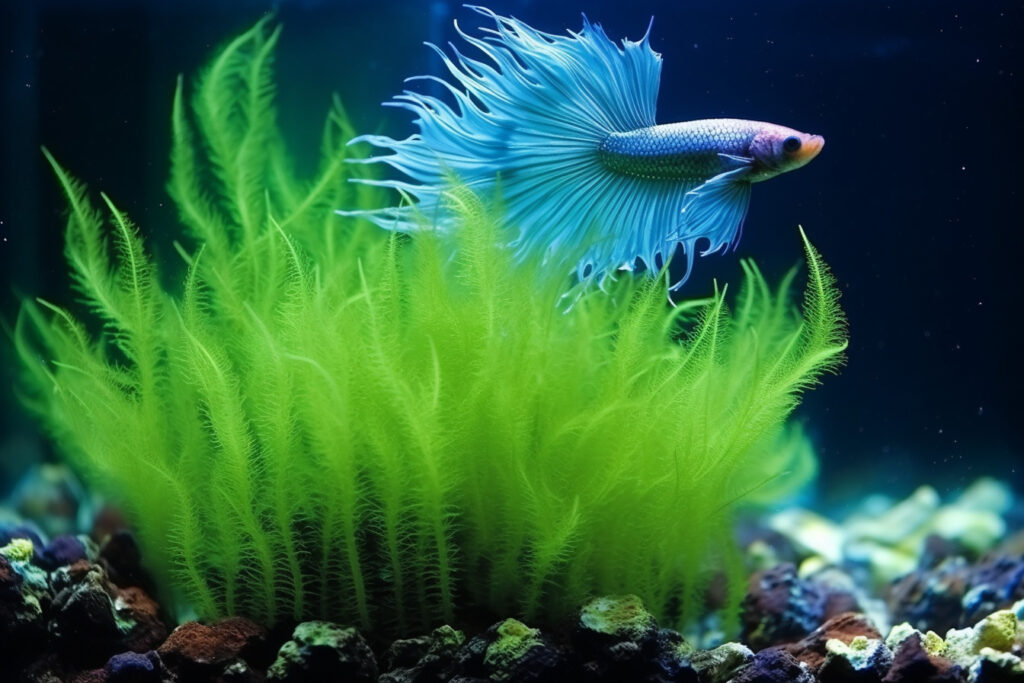
Hornwort (Coontail) For Betta Fish Tank, Is It Good?
Home Hornwort (Coontail) For Betta Fish Tank, Is It Good? Explore the benefits of hornwort
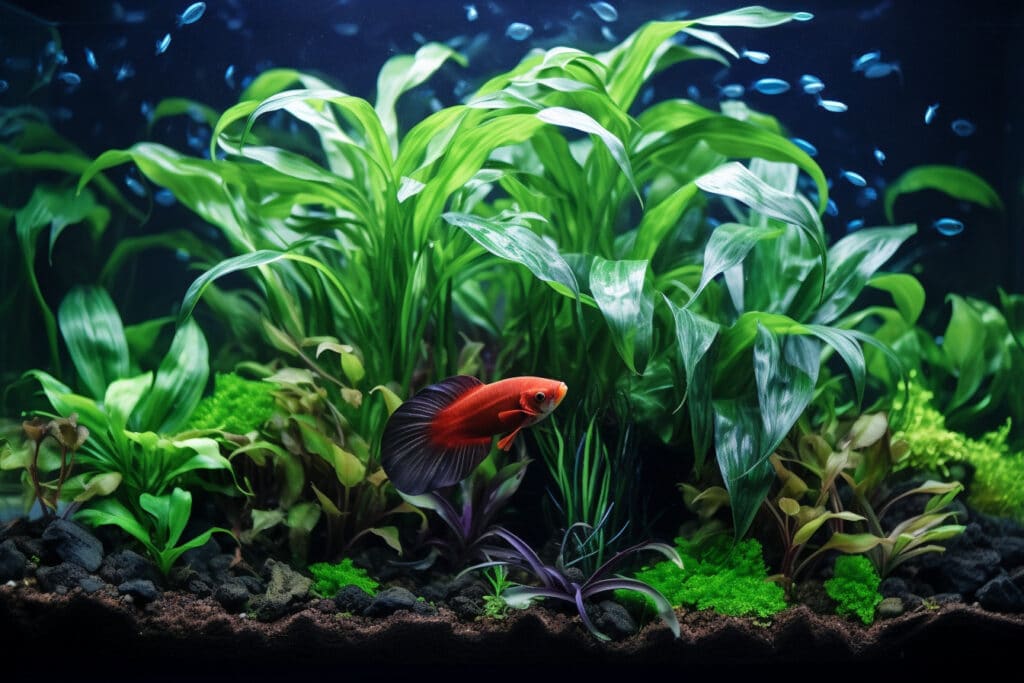
Best Anubias Plants For Betta Fish
Best Anubias Plants For Betta Fish Today, we’re diving deep into the world of Anubias
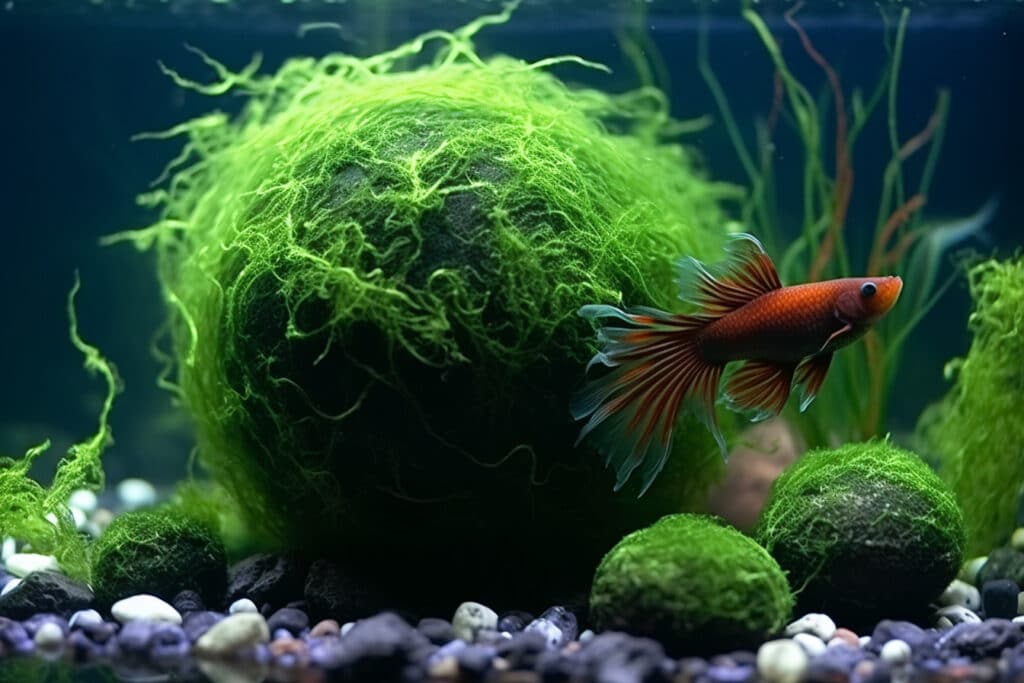
Java Moss for Betta Fish, Is It Good?
Home Java Moss for Betta Fish, Is It Good? Hello, aquatic enthusiasts! Welcome to our
